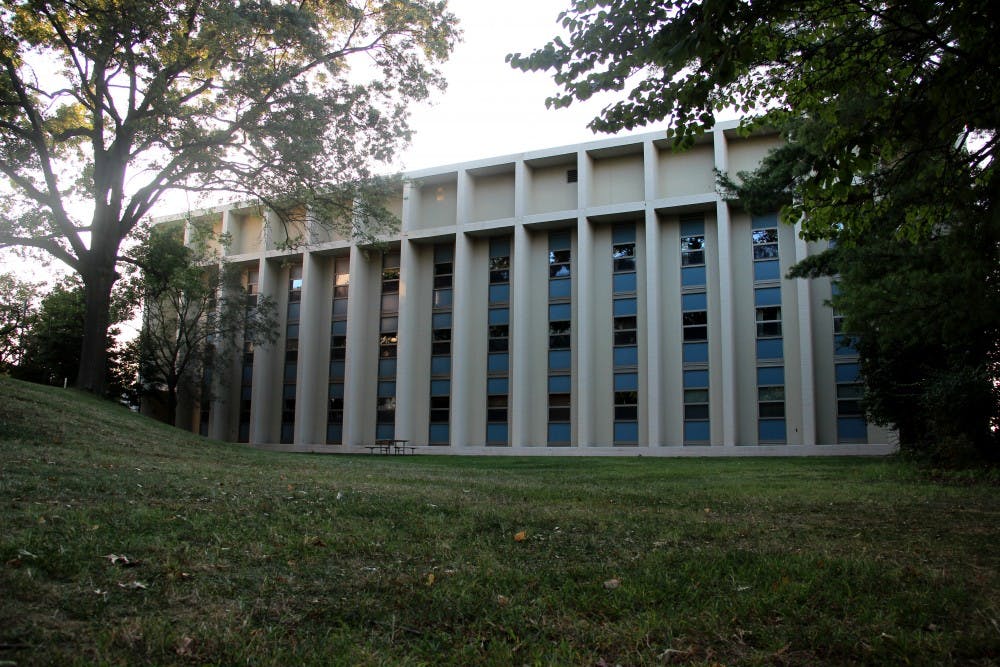The University is in the planning stages to build a new center for the sciences which will include 75,000 square feet of space and is expected to cost $40 million, with an opening slated for fall 2019.
The facility, pending approval from the city planning commission, will house the biology, environmental science, chemistry and neuroscience departments and will provide the tools for interdisciplinary collaboration, with the goal of benefiting both students and professors, according to U.J. Sofia, the associate dean of research for the College of Arts and Sciences.
Undertaking this initiative is the biggest step the University has taken to promote the sciences in half a century and is a needed change in order to give science courses appropriate learning space, CAS Dean Peter Starr said.
“The research capacity of the University has grown substantially, but the one thing that is hard to do is to recruit undergraduates to study in substandard buildings,” Starr said.
Starr gives credit to Provost Scott Bass, the Board of Trustees and President Neil Kerwin for realizing that putting better infrastructure in place and helping the science departments grow needed to be a priority.
AU has also been investing more in the sciences through the construction of the Don Myers Technology and Innovation Building on East Campus, set to open next semester. This facility will house the physics, computer science, mathematics and statistics departments, along with the AU Game Lab and the Kogod School of Business Entrepreneurship Incubator.
Currently, less than 10 percent of AU students major in the sciences. Despite that, science is the fastest growing area of undergraduate study on campus, Starr said. He hopes that the number of science students admitted to the University increases in the years ahead, and said that no matter what field students go into, an understanding of science and its impact on the world is important.
“You need science to back up anything you want to do to make the world a better place, and that is absolutely the core of our convictions,” Starr said.
The parking lot area next to the Asbury building is supposed to be the site of the new building, according to Starr. While the design is still being negotiated, plans are to construct a five story building that will have minimal impact on the neighborhood with limited exposure to the University’s neighbors, Starr said.
Meanwhile, a fundraising campaign for the project will begin once Kerwin steps down in May 2017 and a new president takes office, according to Starr.
Faculty members from all the science departments have been meeting with representatives from the architecture firm Ballinger for over a year to discuss what plans would be best for academics and research, according to Sofia.
“They specialize in science buildings in academic campuses for the most part, so this is a company that has a lot of experience in doing exactly the type of thing we want to do,” Sofia said.
The project aims to foster collaboration across different science departments to produce the best research and teaching possible, according to Sofia. The new building will be constructed to be flexible with future growth in mind, and faculty will be grouped in lab clusters based on equipment, technology and resources needed rather than by department, Sofia said.
“This is going to be fantastic for undergraduates, graduate students, for the faculty in research, and this will probably allow faculty to go into areas they haven’t gone into before and get grants more easily because funding agencies actually look at the resources the University is putting toward different research programs,” Sofia said.
Aijah Raghnal, a sophomore in CAS majoring in literature and on the pre-med track, said she has been satisfied with all her science courses so far, but not with the lab and classroom space. This project is a needed upgrade that can help bring in more students to the sciences and make the program stronger, Raghnal said.
“Since I’ve been here, I’ve always felt that that even though the buildings can be better, the professors have been great and have made it worth it,” Raghnal said. “But if incoming science students were to come in and see a new building instead of Beeghly or Hurst, they would think that the school was dedicated to the progress of science and sense the commitment that exists as soon as they stepped on campus.”





